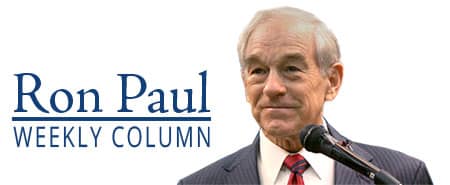
Last week, President Biden announced he is creating a new program forgiving 10,000 dollars of student loan debt for those with income under 125,000 dollars a year. The amount rises to 20,000 dollars for borrowers who are Pell Grant recipients. Biden flip-flopped on the issue as he previously denied that the president has the authority to create a new student loan debt forgiveness program. He now claims a 2003 law allowing the Education Department to waive or modify provisions of federal student financial assistance programs to help students affected by war, other military operations, or a national emergency gives him the authority. Biden says debt forgiveness is necessary because of a continuing covid national emergency.
It seems odd that Biden would claim covid is a national emergency when even the Centers for Disease Control (CDC) has stopped recommending lockdowns, masks, and “social distancing.” A broad student loan forgiveness program also does not seem to fit the purpose of this statute, which was to provide student loan forgiveness for military personal, first responders, and others engaged in fighting the “war on terror.” Another basis offered for the president having the power to cancel the loans is a provision in the 1965 Higher Education Act that gives the Education Department limited authority to modify or forgive student loan debt. Given the Supreme Court’s recent decision narrowing the scope of a federal agency’s ability to unilaterally enact major new policies based on limited grants of authority, it is a definite possibility that the courts will overturn the student loan forgiveness program.
If the courts uphold the president’s action, then as many of 43 million Americans could have significant amounts, or even all, of their student debt forgiven. Of course, the debt does not go away; instead, the “forgiven” debt will simply be added to the national debt to be paid by the taxpayers either in the form of direct taxes or the hidden inflation tax. Thus, these loans will be paid off in part by taxpayers who did not go to college, paid their own way through school, or have already paid off their student loans. Since those with college degrees tend to earn more over time than those without them, this program redistributes wealth from lower to higher income Americans.
The student loan forgiveness will add between 300 and 500 billion dollars to the national debt. This is a greater increase in debt than the supposed “deficit reduction,” which consists of tax increase and expanding the IRS, contained in the phony Inflation Reduction Act.
President Biden also announced he is extending the student loans payment moratorium through the end of the year. “Temporary” federal benefits are rarely, if ever, truly temporary. When the time comes for the moratorium to expire, Congress will almost certainly extend it in response to pressure from constituents who benefit from the program, which includes colleges and universities in Congress members’ states and districts. The expectation that more student loan debt will be forgiven will also encourage more students to take out loans and will give colleges a new incentive to raise their tuition. This will raise the cost of the student loan and loan forgiveness programs.
Increasing debt caused by expanding student loans and loan forgiveness will increase pressure on the Federal Reserve to keep interest rates low, leading to continued price inflation and an eventual major economic crisis. A step in avoiding this and reversing course is convincing a critical mass of people to understand that the welfare-warfare state and the fiat money system that underlies it are impractical and immoral.

